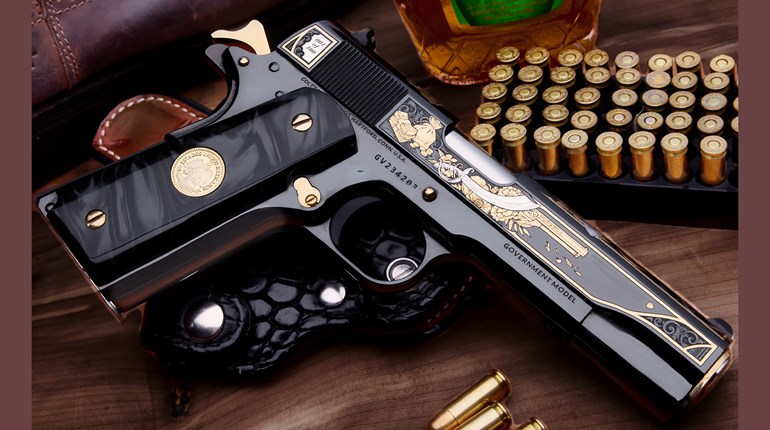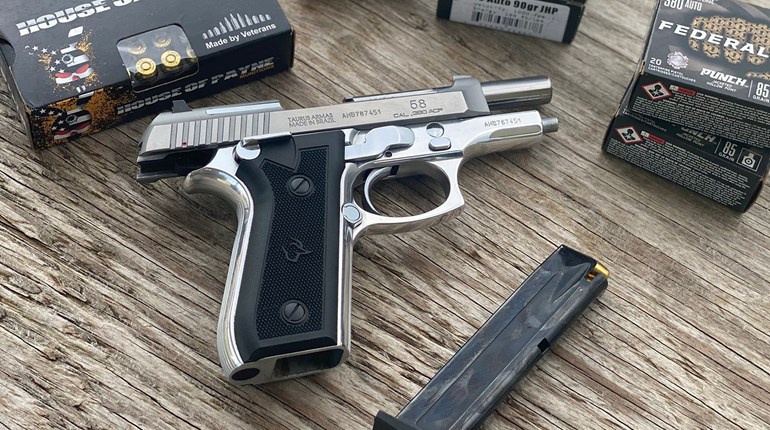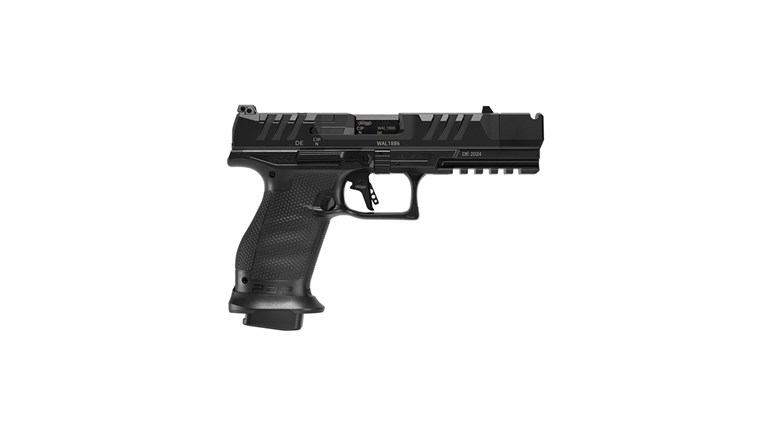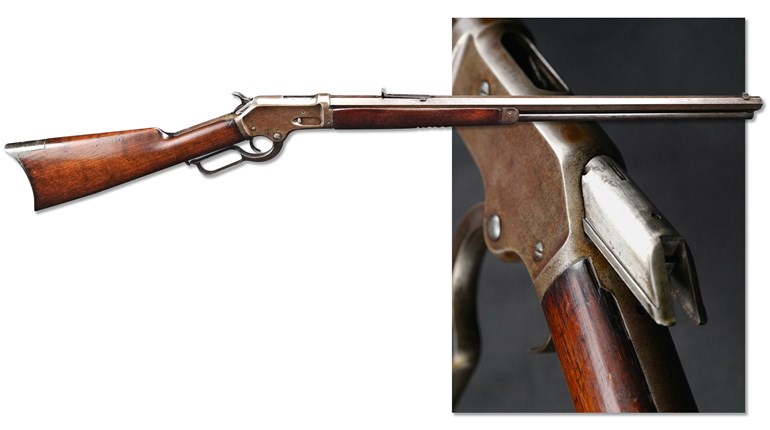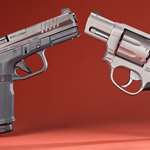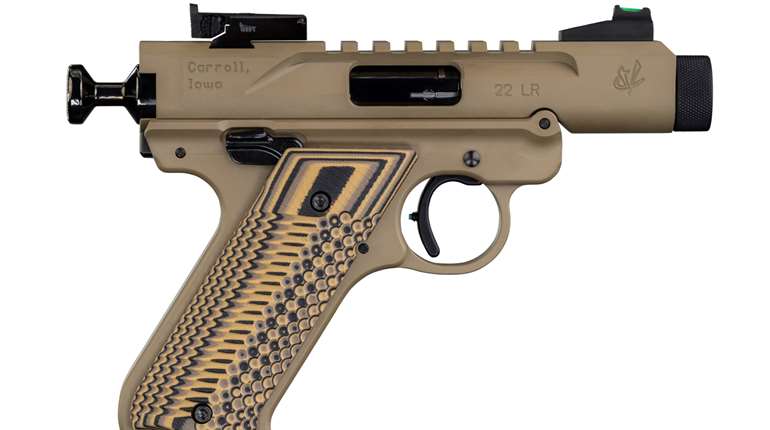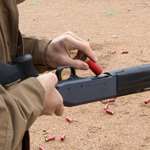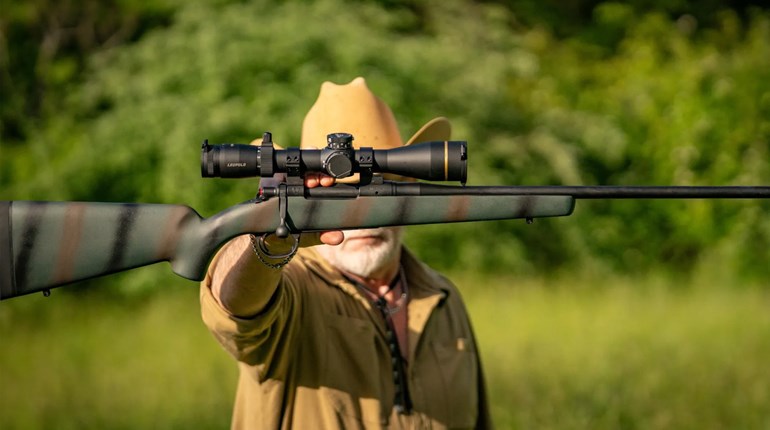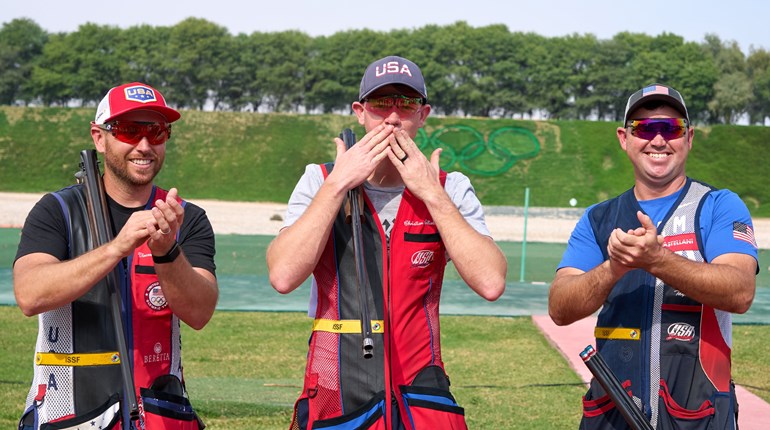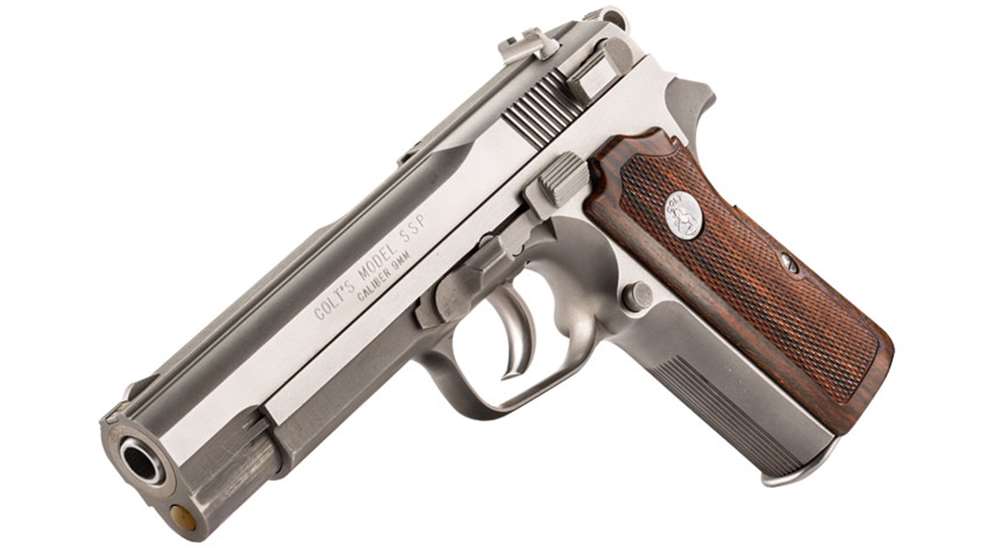
When the big war ended in 1945, the U.S. service pistol was the venerable 1911. Colt developed and made that big .45, as did Remington Rand, Singer Sewing Machine, Ithaca, and Union Switch and Signal by the tens of thousands. When the war ended, the demand ended and production lines closed down. That was true of not only pistols, but also almost all items of ordnance. Colt went back to making commercial .45s. At that point in the history of American arms making, the only firm offering a service-grade, defensive semi-automatic was Colt. In a real sense, the company had a monopoly. There were no other portable pistols made in America in serious fighting calibers, those with more smack’em than the feeble .380 ACP. Within 15 years, Colt was still making those classic 1911s, but slowly losing its market to Smith & Wesson and those blasted imports.
My pal, the late Chuck Karwan, once wrote that three different pistols of World War II established the criteria for semi-automatics of the post-war world. They were the Browning Hi Power (high-capacity magazine), the Colt 1911 (large caliber) and the Walther P38 (DA/SA trigger system). Karwan got two out of three and the jury is still out on the caliber issue. The point is that in the decades following the war, the world as a whole grew enthralled with service pistols that had a double-column magazine and some form of double-action trigger. While you might argue that pistols have little to do with winning wars, they are nonetheless the most personal of firearms. A pistol may be carried on a soldier’s body, making it ideal for him (or a police officer) as they go about their duties. Therefore, by the late ’60s, the handgun world was alive with new 9 mm pistol designs. One was from Colt, and it took the old-line gunmaker a couple more years to come up with the 1971 model, often referred to as the SSP for “Stainless Steel Pistol.” I call it the gun that got away.
The U.S. Government declared official interest in a new service pistol in the ’50s and the bureaucracy conjured up three different waves of evaluations before the 1985 adoption of the Beretta M9 pistol. In its heyday, the SSP would seem to have a great deal going for it. Designed by Colt’s Bob Ray, the pistol was, to put it delicately, influenced by fabled European designs. Charles Petter, a gun designer and former officer of the French Foreign Legion, came up with a semi-automatic known as the 1935A for the French Government in the mid-1930s. Chambered for the 7.65x20 mm Longue (or .30-18 Auto) cartridge used in the Pedersen Device, it had some excellent and innovative features like lockwork mounted on a plate and reversed slide rails. Both of those latter points were used by Swiss engineers when they came up with the much-respected SIG Sauer P210. Some of the same stuff made its way into the Czech CZ-75 and its endless variations. Understand that all of this was going on at a time when every pistol maker in the world was building a high-capacity 9 mm with a DA-trigger system of some sort. In the engaging term coined by gunwriter Bob Shimek, it was the Wondernine Wars.
When the competing got into full swing, it would seem that the Colt gun would have made a strong showing. Years ago, I got a chance to handle (but not fire) one of the guns. The SSP was all stainless steel, which was not all that common in the late ’60s when the gun was designed. It had a strong resemblance to the 1911, except for a larger trigger guard and pivoting, rather than sliding, trigger. The grip angle was almost identical, but the feel was much different. It was noticeably thicker, due to the double-column magazine, wide frame and burly grips. There was an unfamiliar lever on the slide, right at the cocking serrations, which was a combination decocker-safety. Also, I noted the high frame shape characteristic of the much-lauded reversed rail system, where the slide travel is controlled in the back-and-forth vector. For the test trials of the early ’70s, Colt manufactured a small quantity of SSPs. Thirty were submitted and sources vary as to the total number actually made. It was probably around 50. As best as I can determine, they were all chambered in 9 mm, though I have seen photos of the same gun in .45 ACP.
Before the trials were completed, Colt withdrew from the program. I have prowled through as many reputable sources as I can find and have not been able to determine the exact reason or reasons why Colt management took this action. Colt never got into the so-called “Wondernine War” although it made a try with a completely new 9 mm polymer-frame pistol. What is interesting is the existing SSP samples and yes, some of them do exist. They occassionally pop up on the online auction sites from time to time. While not as rare as say...a test-trial Luger chambered in .45 ACP, of course, they are going to command a hefty pricetag.
Colt’s SSP was a handgun that got away. It might not have been hugely successful, but it remains fightin’ iron.












